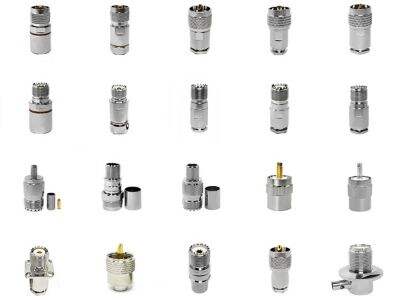Cable assemblies are a vital link in the pathway that aid signals in moving seamlessly between locations. They make sure the signals retain their strength along the way. This matters a lot because the signal must be strong enough by the time it gets to its destination or else it won't work. But there is a lot that can be done to make cable assemblies work better. This helps ensure signals are strong, clear and legible.
Where does Signal Loss in Cable Assemblies occur?
Signal loss is the reduction in amplitude or strength of a signal as it’s transmitted through a cable. There are a number of reasons why this might happen. Second, the resistance in the cable itself can slow the signal down. One more factor may be signal disruption due to interference from other electronic devices in the vicinity. It is critical to wrap your head around how signal loss occurs. With this knowledge, we can do things to stop the signal loss and maintain the strength of the signals.
Types of Cables That Provide Strong Signals
A good way to prevent signal loss is to choose the cable suitable for the application. All types of cable have their own characteristics. Some cables are great for carrying high-frequency signals but don’t work well over longer distances, while other cables are the exact opposite. By selecting the correct cable, you can help keep the signals strong. Selecting the appropriate cable and connections is like selecting the appropriate tools for a work; the right cable makes a difference in how the signals effort well.
And How to Properly Install Cables
Cable assembly integrity for minimum signal loss is important as is proper installation. Improperly installed cables are bent or twisted. This bending or twisting can lead the signal to weaken a great amount. This problem can be prevented if good installation practices are followed. This means taking care when running the wires, and making sure to connect them properly. If you take the time to install the cables properly, you can avoid problems in the future and keep your signal strong.
Diagnosing and Repairing Signal Loss Issues
Even after choosing the right cable and installing it correctly, it is advisable to test your cable assemblies. Make sure everything works normally by testing it. If there are issues, testing allows you to determine the source of the signal loss. If you detect a problem, troubleshooting techniques can help you determine what has gone wrong and how to correct it. Noticing this step is crucial, for why to face more serious issues at a later stage, you can bear in mind the problems now.
Cable Assembly Maintenance Best Practices
Finally, routine maintenance is essential to ensure that your cable assemblies will keep on functioning well for years to come. This maintenance may consist of inspecting the cables for wear and tear, cleaning the connectors of any dirt or dust, and verifying that all the cables are still firmly installed. Following these procedures, you can mitigate signal loss and maintain strong, clear signals with your cable assemblies. Like taking care of a car so it performs better!
Signal loss is a significant concern, and thus reducing it in cable assemblies is crucial. This keeps signals strong and clear, which we want to do. Knowing what signal loss is, selecting the correct type of cable, installing them correctly, including testing for faults and maintaining your cable assemblies can all contribute towards making certain that your signals will be efficient and effective. Keep in mind RFVOTON is always here to help with your cable assembly concerns to take care of this and help you get the best results.

 EN
EN
 AR
AR
 BG
BG
 HR
HR
 CS
CS
 NL
NL
 FI
FI
 FR
FR
 DE
DE
 EL
EL
 HI
HI
 IT
IT
 JA
JA
 KO
KO
 NO
NO
 PL
PL
 PT
PT
 RO
RO
 RU
RU
 ES
ES
 TL
TL
 IW
IW
 ID
ID
 VI
VI
 HU
HU
 TH
TH
 TR
TR
 FA
FA
 MS
MS
 UR
UR
 HA
HA
 JW
JW
 LA
LA
 MY
MY
 KK
KK
 TG
TG
 UZ
UZ
 AM
AM
 PS
PS
/images/share.png)
